Stars of the East: Restaurants in Asia
Our Top Picks for Restaurants in Asia
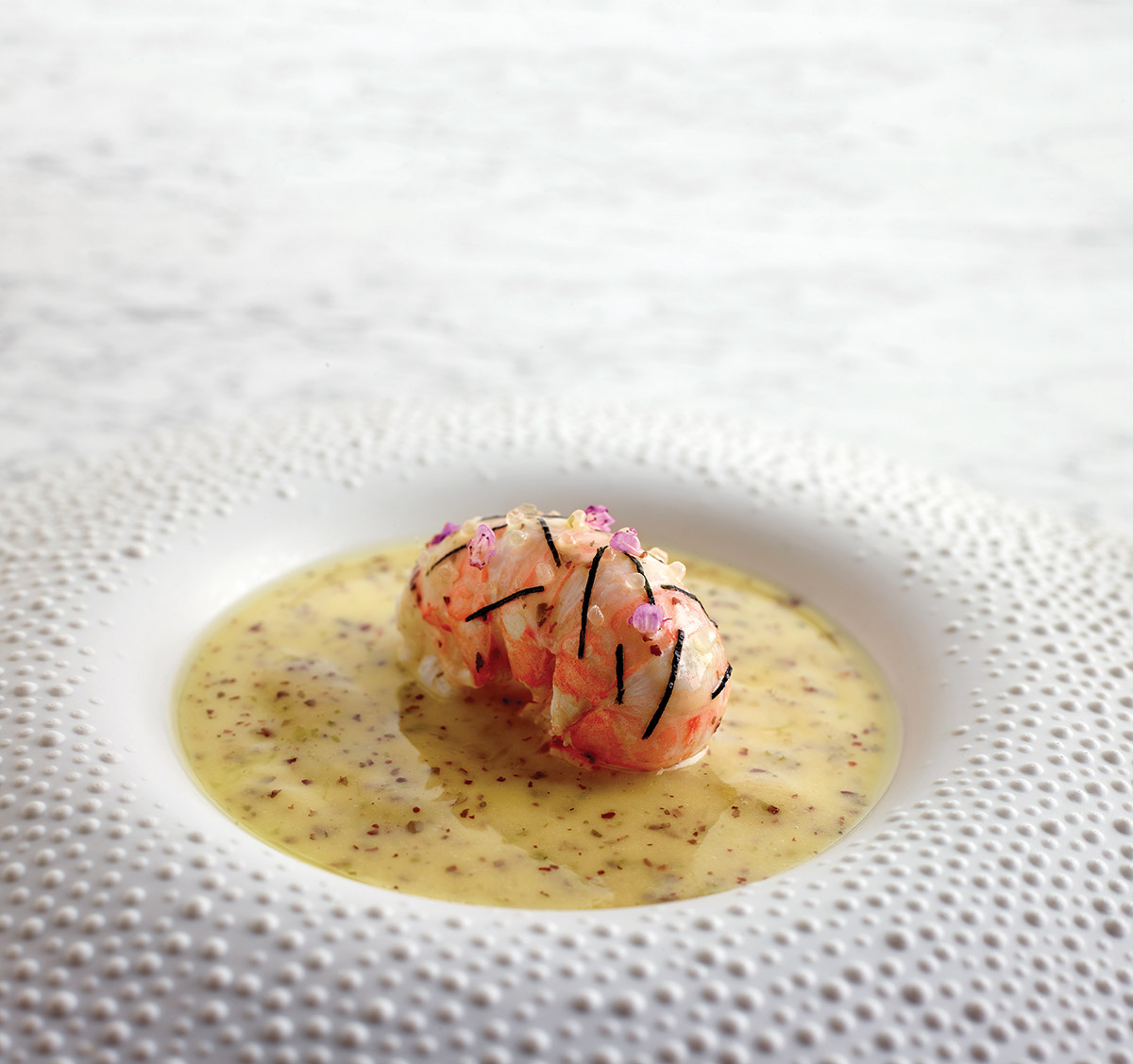
Set in Singapore’s National Gallery, Odette marries the principles of French food with local flavours and ingredients, resulting in fabulous dishes such as Akaza Ebi and fingerlime
Artisanal ingredients
One such restaurant in Asia is found at the National Gallery in Singapore. Specialising in modern French food, three-starred Odette is headed by French chef and co-owner Julien Royer, who transforms seasonal artisanal ingredients into delicious dishes with a delicate, refined touch. “Odette is about honest cooking,” he says. “We have been evolving the cuisine to gradually marry the principles of French food with local Singaporean flavours and ingredients — it’s a fine line, but we’re starting to find that rhythm.”
Although Odette has been decorated with two Michelin stars, the restaurant’s atmosphere is relaxed and welcoming, a fact he takes pride in.
Enjoying conversations
“The fine dining scene in Singapore has come a long way in recent years — it is no longer an exclusive and stuffy experience. As more people become knowledgeable about good food, fine dining here is less about traditional opulence and instead about connections — enjoying conversations with your server or the chef, for instance,” Royer explains. “This even extends to the producers behind the ingredients, or the artisans behind the plateware; people are looking for sincerity and authenticity.”
Elsewhere in the Lion City, Royer recommends Andrew Walsh’s modern European fare at Cure, as well as the innovative Japanese kappo-style Esora by Shigeru Koizumi.
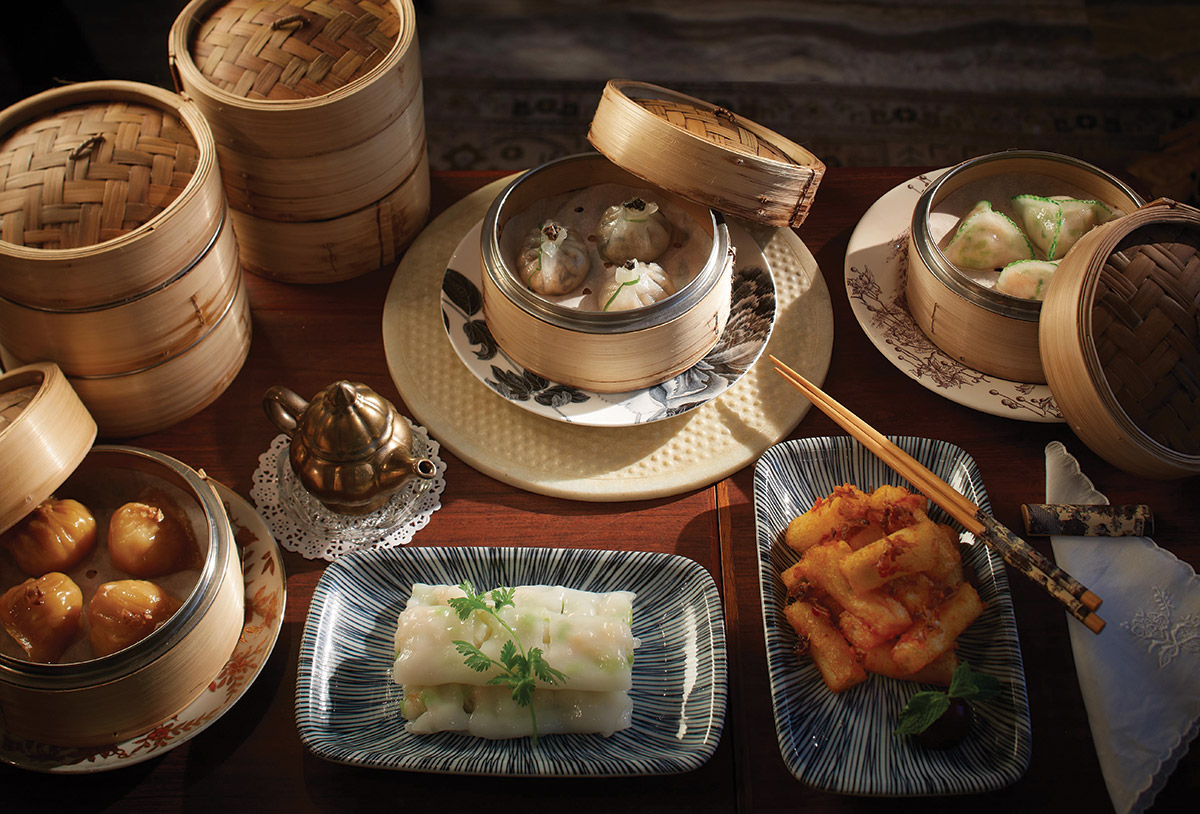
Duddell’s in Hong Kong is renowned for its sophisticated Chinese cuisine, such as meticulously crafted dim sum and fine dining delights including pan-fried Miyazaki Wagyu with fermented black bean sauce
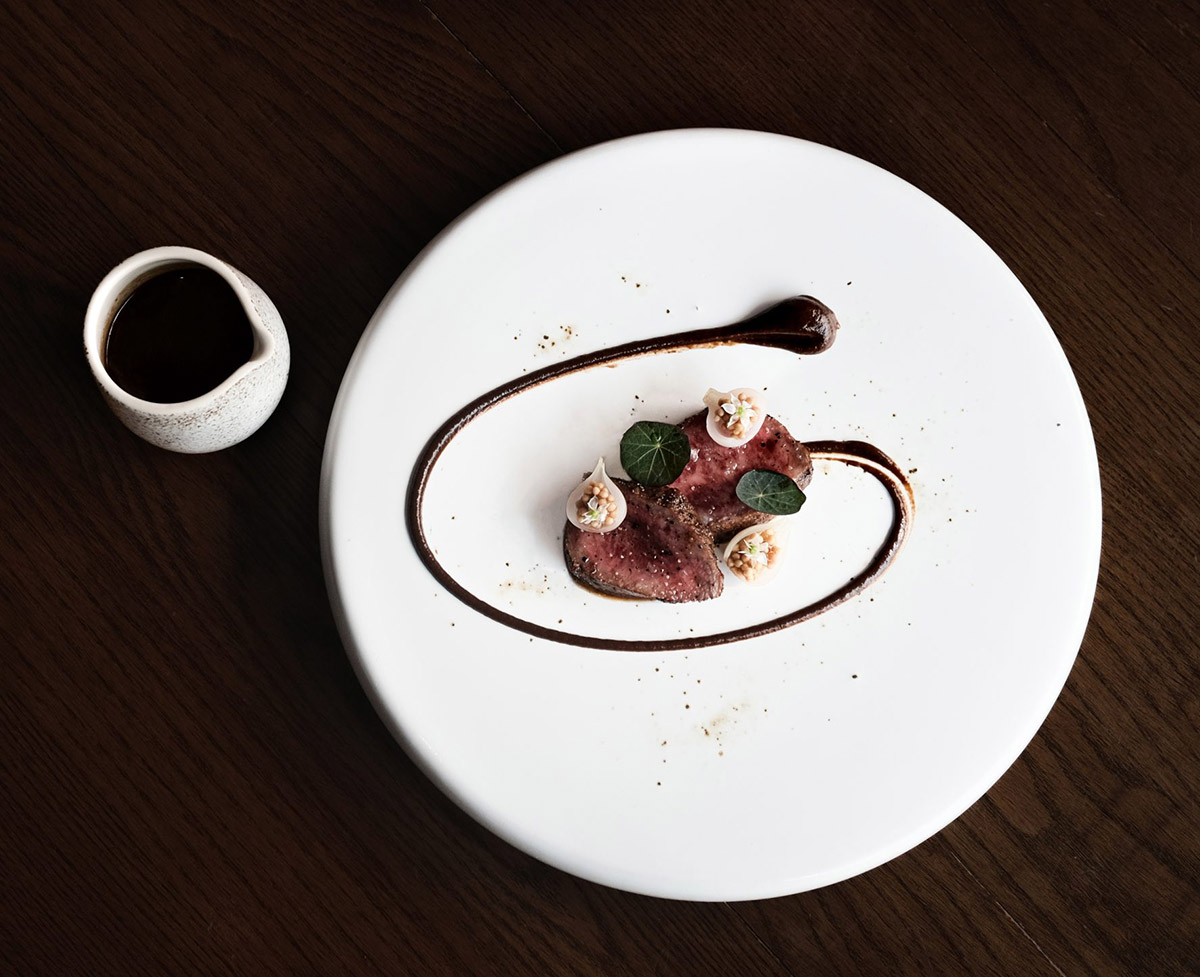
Cure’s Kagoshima sirloin Wagyu, complemented by the deep umami of black garlic onion puree – © Cure
Over in Hong Kong, one-starred Duddell’s is renowned worldwide for its authentic yet sophisticated Cantonese cuisine. A place where the art is as fine as the dining, the two-storey restaurant in Asia has its own Art Manager, a year-round art programme and hosts regular exhibitions and screenings. Meticulously crafted dim sum takes pride of place on executive chef Funh Mang-Ip’s menu, including deep-fried pork and shrimp wantons and pork dumplings with flavoursome scallops and crab roe. That said, diners should bring their appetites to savour the à la carte offering, with dishes tailored to create balance within the Cantonese culinary tradition of yin and yang — think double-boiled imperial bird’s nest with almond cream, or the popular crispy suckling pig.
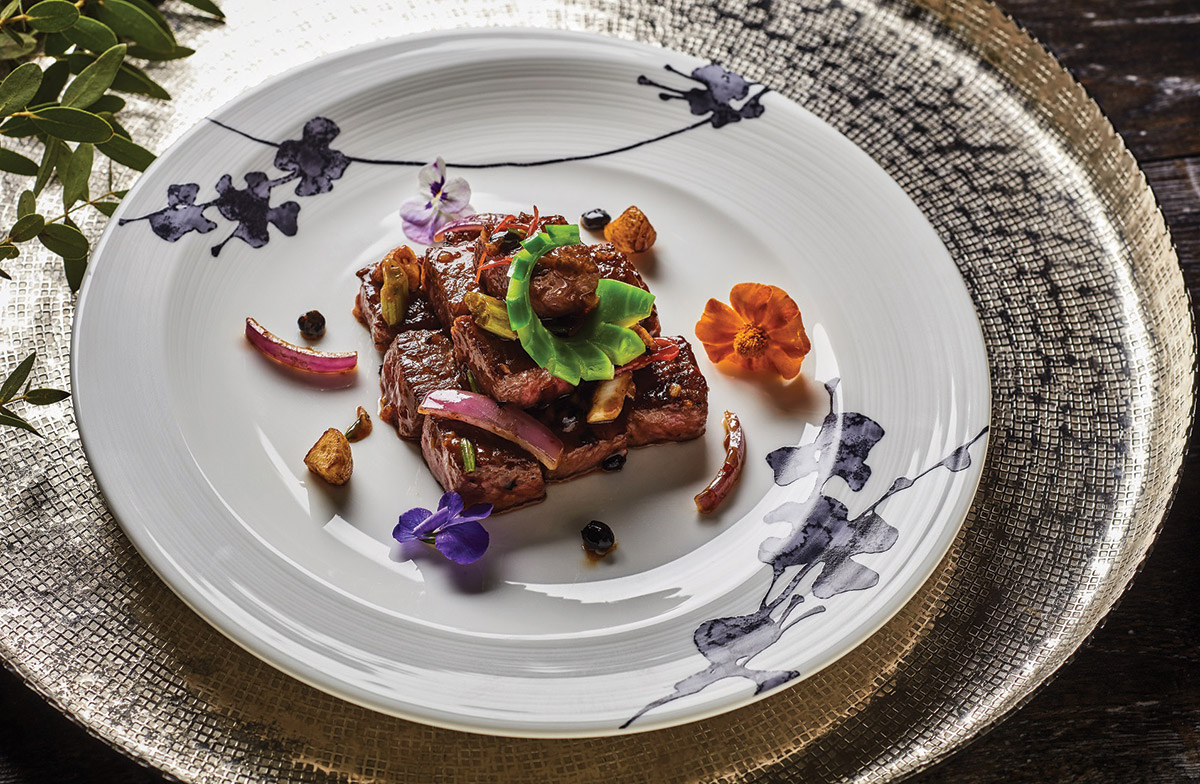
Tokyo’s L’Osier presents new takes on French and Japanese food, including four ways with crab
Creating Balance
According to the 2023 Michelin Guide, Tokyo currently holds the world record as the city with the most Michelin-starred restaurants, with 183 restaurants receiving twinkling stars. One of the brightest spots is L’Osier, located in Ginza on the second floor of the swish two-storey building it owns. Established in 1973, L’Osier has quietly stood the test of time, aloof from passing fads and the “superficial splendour” of fine dining’s yesteryear — a feat recognised in the 2019 guide with the award of the rarefied third star.
Executive chef Olivier Chaignon presents traditional French cuisine with unsurpassed flair, artfully combining seasonal ingredients from both Japan and France. Such dishes as the Hokkaido venison with fermented black pepper, or the achingly succulent blue lobster, cooked in Chinese quince vinegar and lobster sauce, extol L’Osier’s commitment to richness in all its forms.
Many of East Asia’s top Michelin-approved offerings are to be found within its five-star hotels. On the riverbanks of Shanghai is the Bulgari Hotel, one of the nine in a chain of super-luxe international properties. Its glamorous 47th-floor restaurant, Il Ristorante Niko Romito is run by Italian chef Niko Romito, who was first introduced to eastern Asian fine dining when he opened a restaurant of the same name at the group’s Beijing hotel.
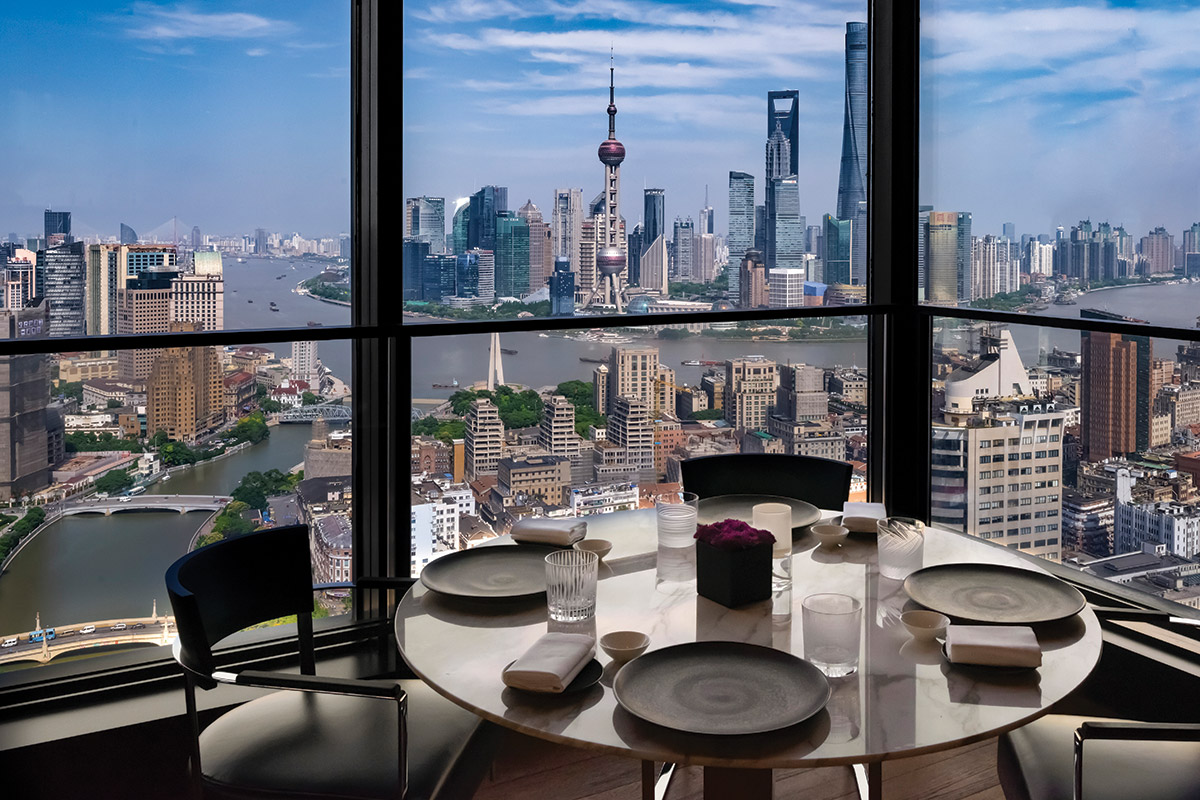
Il Ristorante Niko Romito enjoys fabulous views from the 47th floor of Shanghai’s Bulgari Hotel
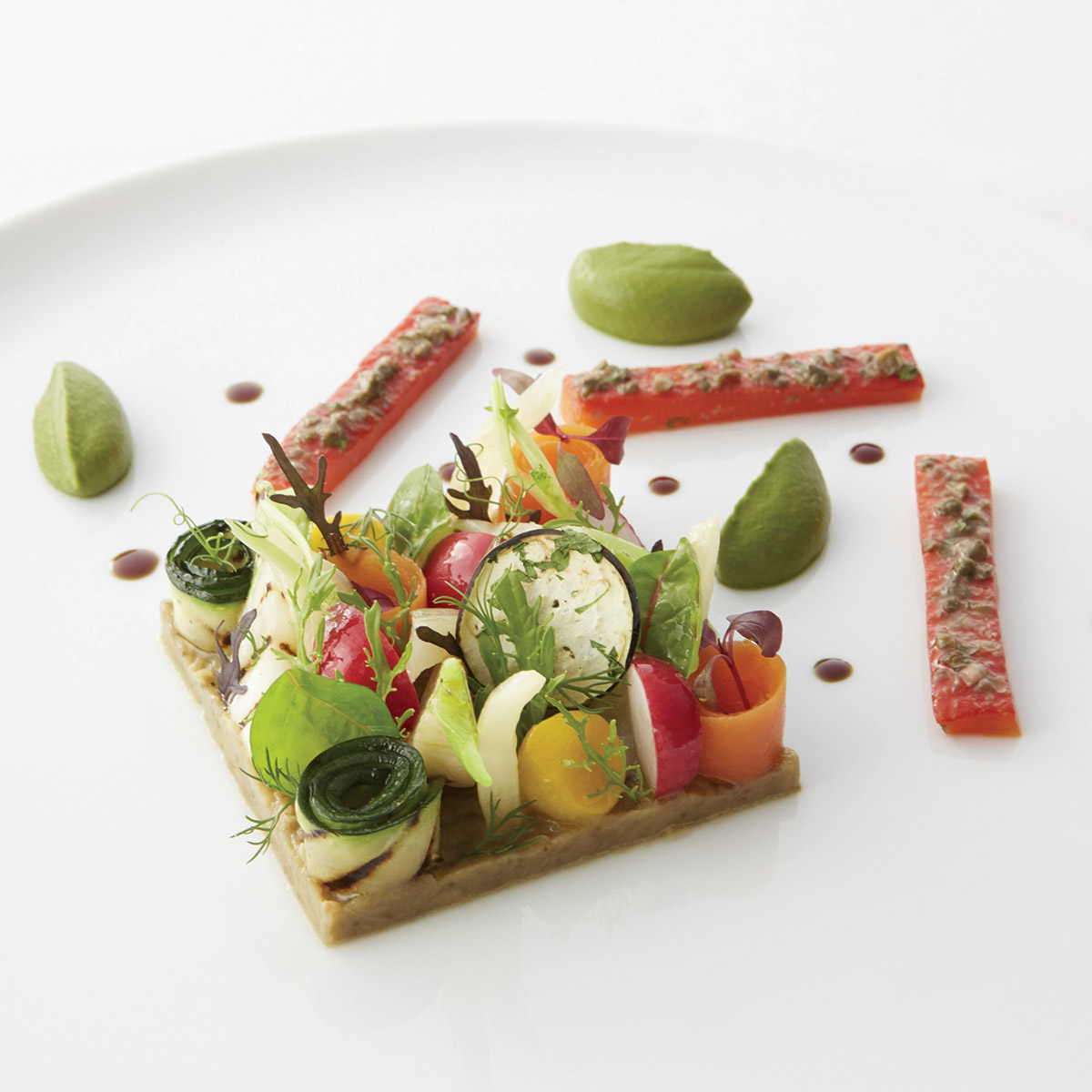
L’Osier’s colourful Jardin d’ete
Cultural heritage
“I have always been fascinated by Chinese tradition and its gastronomy reflects this cultural heritage, spanning street food to restaurants that are increasingly referring to a refined, high-end cuisine,” he says. “The public [in China] is becoming more inclined to explore new gastronomic models. Today’s fine dining scene has many excellent Asian places, but also international chefs that bring their homeland cuisine here.”
As one such chef, Romito takes pride in celebrating his Italian heritage with his dishes at his restaurant in Asia, which breathe new life into Roman classics with cutting-edge techniques —think beef carpaccio, roasted glazed lamb and a crispy suckling pig with orange caramel sauce. While he refuses to compromise on the innate Italian roots of his menu to suit Shanghai tastes — “spaghetti is supposed to be eaten in just this way, tomato’s acidity is just so” — he is open to Asian influences.
“I can’t wait to study Chinese techniques for cooking broth, for instance,” he says. “There are some fundamental differences between Asian and Italian cuisine. In Asia, dishes contain a wide number of ingredients, spices are important and the finishing touch to many iconic dishes — such as Peking duck — is the glaze. It’s really interesting to understand how these techniques can be applied in the preparation of some Italian dishes – the crossover between Asian and Mediterranean cuisine is an incredible experience.”
As eastern Asia’s fine dining scene continues to evolve with global culinary influences and brand new takes on traditional cuisine, the future of restaurants in Asia looks starry indeed.
Discover more destinations to visit or contact us to plan your bespoke itinerary today.


 Go back
Go back